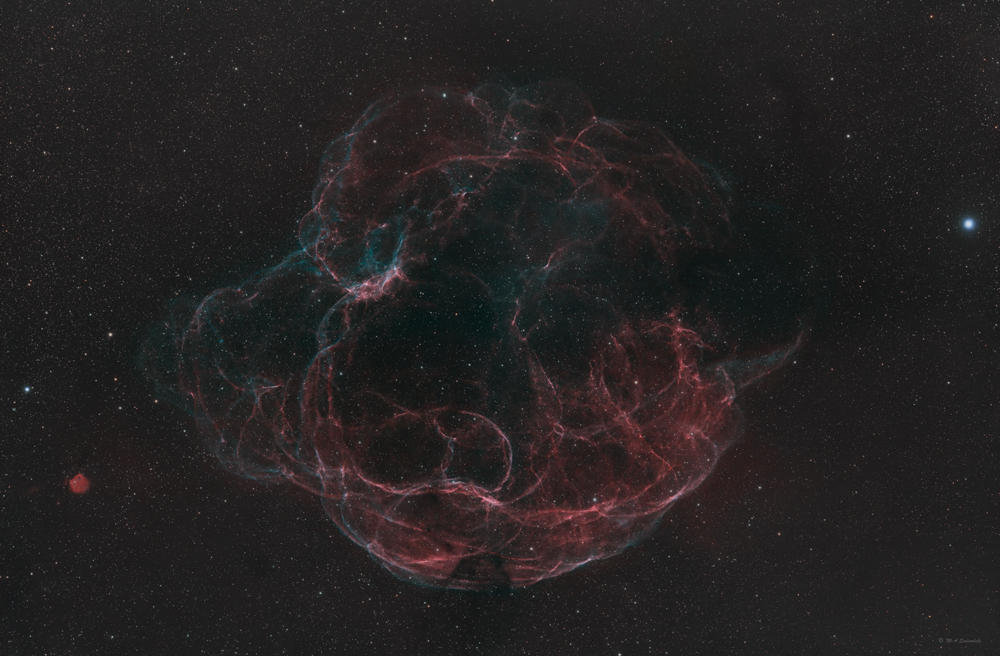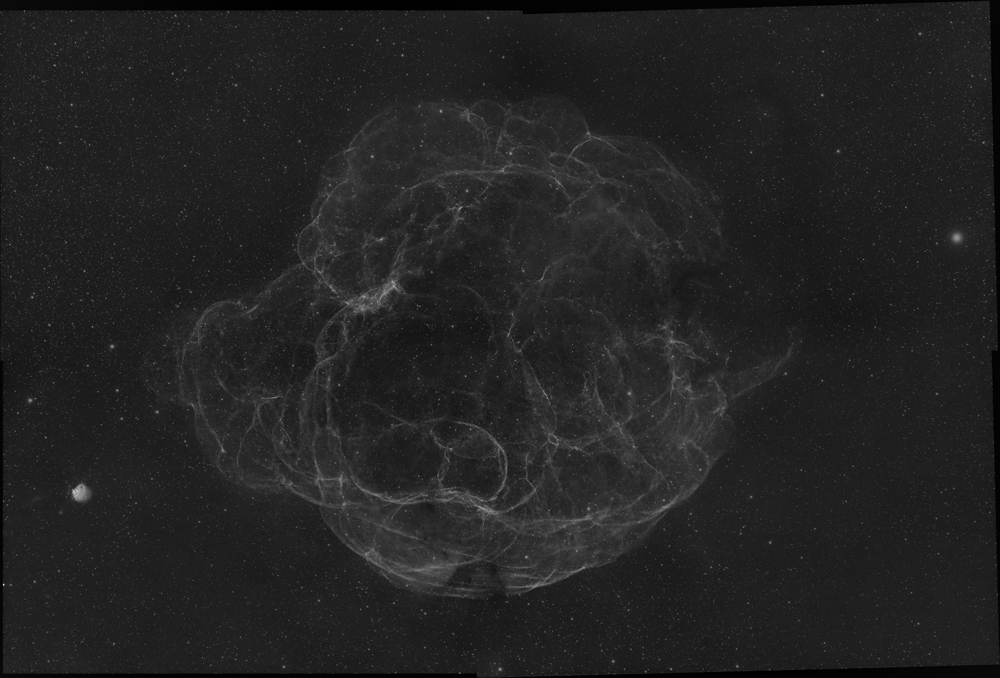© 2024 Michael A. Siniscalchi
SH2-240
Supernova Remnant in Taurus
RA 05h 39m 20s Dec: +27 59' 50" Distance ~3000 ly
Wikipedia-
Sharpless 2-240, also known as the Spaghetti Nebula, SNR G180.0-01.7 or Simeis 147, is a supernova remnant (SNR) in the Milky Way, straddling the border between the constellations Auriga and Taurus. It was discovered in 1952 at the Crimean Astrophysical Observatory by Grigory Shajn and his team using a Schmidt camera and a narrowband filter close to the Hydrogen Alpha transmission line. It is difficult to observe due to its extremely low brightness. This discovery was part of a survey conducted between 1945 and 1955, most likely using captured German equipment, as the observatory was practically destroyed during WWII. The Schmidt camera had a field of view of 175'. Many previously unknown hydrogen nebula were discovered this way, as they are not readily visible in regular photographs.
The nebulous area has an almost spherical shell and a filamentary structure. The remnant has an apparent diameter of approximately 3 degrees, an estimated distance of approximately 3000 (±350) light-years, and an age of approximately 40,000 years. At that distance, it spans roughly 160 lightyears.
It is believed that the stellar explosion left behind a rapidly spinning neutron star known as pulsar PSR J0538+2817 in the nebula core, emitting a strong radio signal.
A supernova remnant (SNR) is the structure resulting from the explosion of a star in a supernova. The supernova remnant is bounded by an expanding shock wave, and consists of ejected material expanding from the explosion, and the interstellar material it sweeps up and shocks along the way.
There are two common routes to a supernova: either a massive star may run out of fuel, ceasing to generate fusion energy in its core, and collapsing inward under the force of its own gravity to form a neutron star or a black hole; or a white dwarf star may accrete material from a companion star until it reaches a critical mass and undergoes a thermonuclear explosion.
In either case, the resulting supernova explosion expels much or all of the stellar material with velocities as much as 10% the speed of light (or approximately 30,000 km/s). These speeds are highly supersonic, so a strong shock wave forms ahead of the ejecta. That heats the upstream plasma up to temperatures well above millions of K. The shock continuously slows down over time as it sweeps up the ambient medium, but it can expand over hundreds or thousands of years and over tens of parsecs before its speed falls below the local sound speed.
Click on image for full size
Click on image for larger size
Initial stretch of 1 1/2 hours of Hydrogen Alpha (Ha) 4-panel mosaic taken with Antlia 4.5nm filter
Initial stretch of 1 1/2 hours of Oxygen (OIII) 4-panel mosaic taken with Antlia 3nm filter


